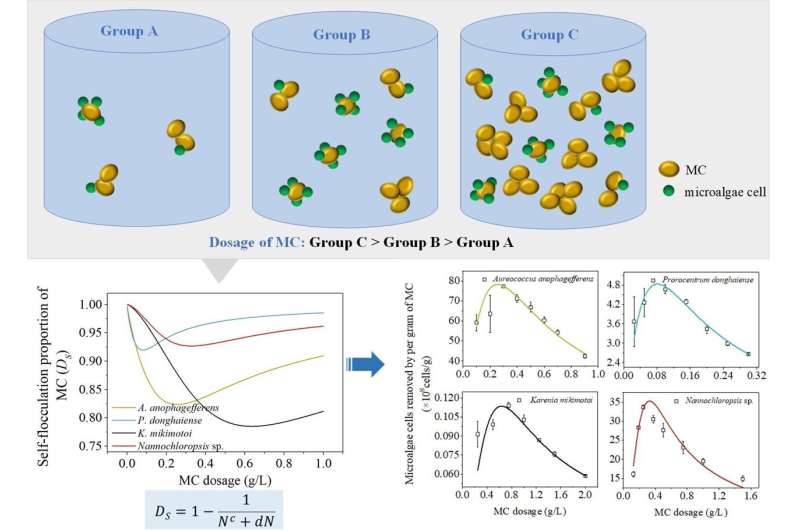Study explores dosage-effectiveness of modified clay flocculating red tide organisms

Red tide is a global marine ecological disaster. Currently, the main remediation technology employed for red tide control on a large scale is to spray modified clay (MC) on the surface of red tide-affected water.
However, the spraying dosage of MC is usually judged by previous spraying experience, which cannot guide the application of MC well.
Recently, a research team led by Prof. Yu Zhiming from the Institute of Oceanology of the Chinese Academy of Sciences (IOCAS) has revealed how MC dosage impacts its effectiveness, and preliminarily established a dosage-effectiveness mathematical model of MC flocculating red tide organisms.
The study was published in Separation and Purification Technology on Oct. 22.
The researchers found that when using MC to flocculate red tide organisms, the effectiveness of MC for microalgae removal increased first and then decreased with the increase of MC dosage. The attractive total interaction energy between MC and MC at close range caused self-flocculation of MC in seawater, which decreased its effectiveness for microalgae removal. MC dosage changed self-flocculation proportion of MC by affecting efficient collision between MC and MC, and between MC and microalgae cells.
Moreover, the mathematical model can simulate dosage-effectiveness of MC well, and deduce the quantitative relationship between the dosage of MC and its degree of self-flocculation.
"The spraying method of MC strongly affects its effectiveness, and the dosage-effectiveness mathematical model can be used as an important reference for MC dosage optimization strategy," said Zang Xiaomiao, first author of the study.
"The study will help to enrich particle flocculation theory and guide efficient spraying practices of MC technology for red tide control," said Prof. Yu, the corresponding author of the study.
More information: Xiaomiao Zang et al, Dosage-effectiveness of modified clay flocculating red tide organisms: Mechanical mechanism and mathematical model, Separation and Purification Technology (2022). DOI: 10.1016/j.seppur.2022.122422
Provided by Chinese Academy of Sciences




















